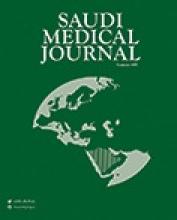Abstract
OBJECTIVE: To detect the functional importance of coronary collaterals, which develop after acute myocardial infarctions (AMI).
METHODS: Forty patients with acute AMI whose coronary angiography demonstrated a total occlusion of the left anterior descendant (LAD) artery were included in the study, between January 2003 and June 2004. All of the study patients underwent coronary angiography and left ventriculography using standard Judkins techniques (Phillips Integris-3000). Left ventricular (LV) free walls were divided into 5 segments, and all of these segments motions were evaluated then LV free wall motion score index (WMSI) was calculated. The study patients were divided into 2 groups: good (Rentrop 3; group I; n = 14) and poor coronary collateral circulation (Rentrop 0-2; group II; n = 26) according to the Rentrop grading. Then, color kinesis dobutamine stress echocardiography (CK-DSE) was performed to all patients with standard techniques 6 weeks after AMI.
RESULTS: There were no significant differences for age, gender, risk factors for the coronary artery disease and use of the fibrinolytic therapy between the groups. There were no significant statistical differences for angiographic WMSI, left ventricular ejection fraction (LVEF), end-diastolic volume, end-systolic volume and end-diastolic pressures between the 2 groups. No difference was detected between Group I and II for initial EF, WMSI and peak dose WMSI in CK-DSE procedure. Viability was determined in all of the 14 patients in group I (100%) and 12 of 26 patients in group II (46%) (p=0.03).
CONCLUSION: In early periods of an AMI genesis of the coronary collateral circulation does not affect left ventricular global and regional systolic functions, but increase viability quite significantly. According to our findings early revascularization could be carried out in patients with good coronary collateral circulation without doing any test for viability.
- Copyright: © Saudi Medical Journal
This is an open-access article distributed under the terms of the Creative Commons Attribution-Noncommercial License (CC BY-NC), which permits unrestricted use, distribution, and reproduction in any medium, provided the original work is properly cited.






